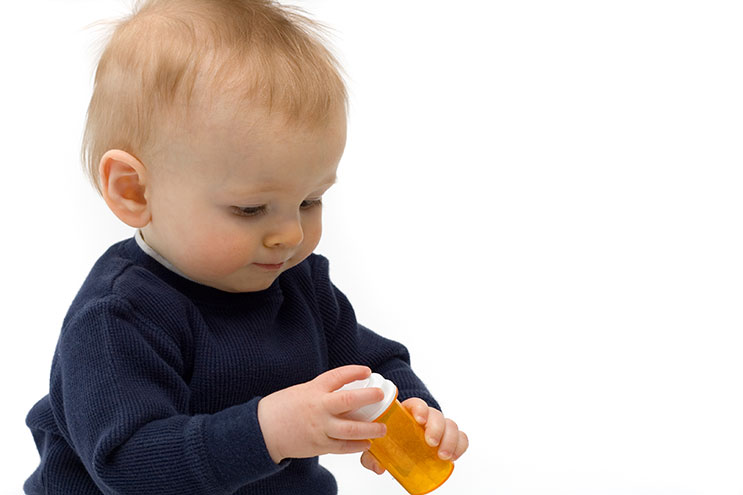Pharmaceutical packaging (Child Proof Cap)

The packaging of pharmaceutical products is responsible for preserving the stability and quality of the drugs, as well as protecting them against counterfeiting. All this without forgetting that the packaging must guarantee that it has not been tampered with, making it difficult to be opened by children (child proof cap) in order to avoid accidents, among other functions.
- Barrier to external factors
From the technical point of view, the packaging must guarantee the protection of the drug from external factors such as light, temperature, etc., which can cause drug degradation. Common causes of drug degradation are: exposure to light, solvent loss, exposure to reactive gases (oxygen), water vapor absorption and microbiological contamination.
The use of opaque materials, with good water vapor and oxygen barrier properties, and properly sealed and intact containers can prevent drug degradation. For this reason, it is common to find multilayer materials composed of different materials that provide the desired barrier properties, many of them including an aluminum foil.
- Active packaging
Another way of ensuring protection from agents such as water vapor or oxygen is the use of so-called active packaging. This is packaging that interacts with the product or the environment, allowing the product to be properly preserved or extending its shelf life.
The active packaging applications (like child proof cap) used in the pharmaceutical sector are mainly based on the interaction of the packaging or packaging material with the environment, i.e. with the oxygen or water vapor present inside the packaging or coming through the packaging from the environment.
- Anti-counterfeiting of medicines
The World Health Organization estimates that counterfeit drugs account for more than 10% of the global pharmaceutical market, without having very precise figures. While this practice exists in all regions, developing countries bear the brunt, with an estimated 25% of the drugs consumed there having been counterfeited. In some countries, this percentage is estimated to be as high as 50%.
Trade in these products is most prevalent in countries where pharmaceutical regulatory control and enforcement are weak, essential medicines are in short or irregular supply, markets are unregulated and prices are unaffordable. However, as counterfeiting methods improve, the presence of these products is increasing even in markets with tighter controls [2].
Packaging can act as a tool in the fight against drug counterfeiting. Optical devices and traceability systems (optical or radiofrequency reading codes) are some of the tools that can guarantee the origin of drugs from the packaging.
Packaging with optical properties, like child proof cap, is designed so that the user can easily and quickly identify the authenticity of the product. The anti-counterfeiting device can be integrated directly into the product packaging, such as a hologram on the carton, or in secondary packaging such as a tamper-evident seal.
Special care must be taken to ensure that such devices cannot be removed from the packaging, to avoid possible reuse of the security device in counterfeit products.
Among the most commonly used devices with optical properties are holograms, which are images that incorporate some effect to introduce the sensation of 3D depth into the package. Holograms are becoming more affordable, which means they may become less effective security features.
Other optically variable devices may be more effective, such as color or image transitions depending on viewing angle, etc. Security graphics that are difficult to reproduce can also be used, such as high quality graphics or embossing, etc.